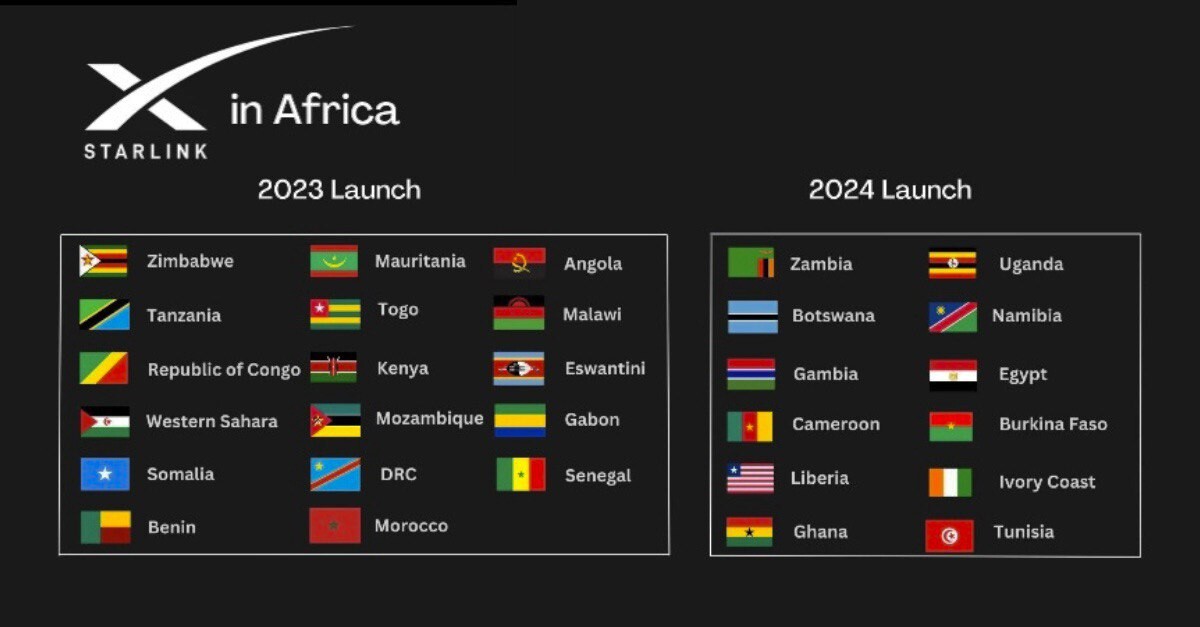In a region where remote and rural areas have long grappled with the challenges of limited connectivity, a transformative solution is emerging from the skies above. Africa’s rural regions are increasingly benefiting from enhanced connectivity thanks to innovative satellite technologies like Starlink, developed by the pioneering aerospace company SpaceX. The collaboration between Africa Mobile Networks (AMN) and Starlink represents a significant leap forward in addressing the digital divide that has historically plagued remote areas across the continent.
Starlink’s Impact on AMN’s Operations
AMN, a leading provider of mobile network services across Africa, has recently activated its first base station that utilizes the low Earth orbit (LEO) satellite backhaul provided by Starlink. This groundbreaking integration of satellite technology enables the delivery of high-speed, low-latency internet services – a crucial requirement for both current cellular technologies and the future deployments of next-generation networks like 5G.
By seamlessly integrating Starlink‘s satellite backhaul, AMN can now fully leverage the capacity of its multi-carrier radio access nodes, which support 2G, 3G, and 4G connections. This technological advancement not only enhances the existing connectivity in rural areas but also paves the way for the introduction of 5G services, opening up a world of opportunities for these previously underserved communities.
Economic and Social Benefits for Rural Communities
The impact of Starlink’s services on rural base stations has already shown tangible benefits in communities like Yebu, Nigeria. Since its connection in 2018, the area has witnessed significant enhancements in communication capabilities, which have, in turn, supported local development across various sectors.
Improved public safety, consistent electricity supply through solar power, and better overall communication with the outside world are just a few examples of the transformative effects that enhanced connectivity has brought to Yebu. These advancements are critical for rural communities, as they contribute to broader economic and social growth, and support essential services such as education and healthcare – sectors that have long been hindered by the lack of reliable connectivity.
AMN’s Expansion and Future Plans
AMN’s strategy extends beyond merely expanding its network across Africa and Latin America; the company is committed to ensuring that the technology deployed is economically sustainable and appropriate for the challenging conditions of rural sites. With over 1,600 base stations already operational in Nigeria alone, AMN plans to continue its expansion throughout 2024, with projects in countries including the Democratic Republic of the Congo, Cameroon, Madagascar, Ivory Coast, Benin, and Rwanda.
This ambitious expansion plan underscores AMN’s dedication to bridging the digital divide and empowering rural communities across the African continent. By leveraging cutting-edge satellite technology like Starlink, AMN is poised to revolutionize connectivity in even the most remote areas, unlocking a world of opportunities for economic growth, social development, and global integration.
Challenges and Solutions
While the expansion of rural connectivity presents immense promise, it also comes with its fair share of challenges. Technological deployment in difficult terrains, ensuring the affordability of connectivity for users, and maintaining service quality that rivals urban standards are just a few of the hurdles that must be overcome.
AMN addresses these challenges head-on through innovative solutions. The company has developed its own solar-powered base stations, reducing reliance on traditional power sources and ensuring a sustainable and environmentally friendly approach to connectivity. Additionally, by utilizing innovative backhaul solutions like those offered by Starlink, AMN can maintain high-quality service levels while keeping costs manageable for end-users.

The partnership between AMN and Starlink stands as a landmark example of how satellite technology can be effectively harnessed to bridge the connectivity gap in Africa’s remote areas. This collaboration not only enhances the quality of life for rural inhabitants but also supports sustainable economic development by integrating these communities into the global digital economy.
As AMN continues to expand its network, powered by the cutting-edge capabilities of Starlink’s satellite backhaul, the potential for further transformation in the region remains vast. With each new rural community connected, doors to education, healthcare, commerce, and countless other opportunities are flung open, promising a more connected and economically inclusive future for all of Africa’s rural areas.
In a world where connectivity is increasingly recognized as a fundamental human right, initiatives like the AMN-Starlink partnership are paving the way for a more equitable and prosperous future. By harnessing the power of technology and fostering collaborations that transcend borders, Africa is taking bold strides towards bridging the digital divide and unlocking the limitless potential of its rural populations.




